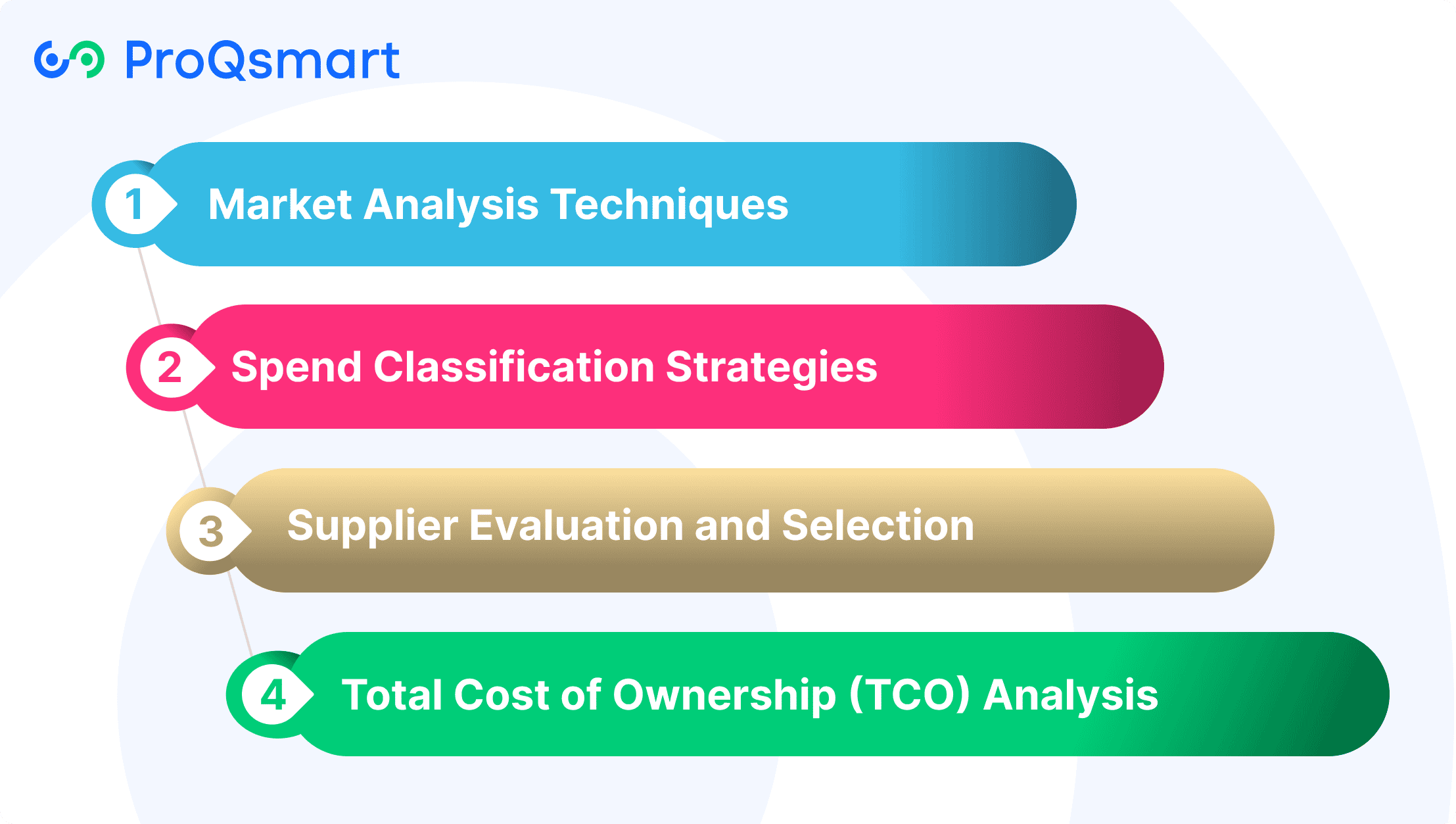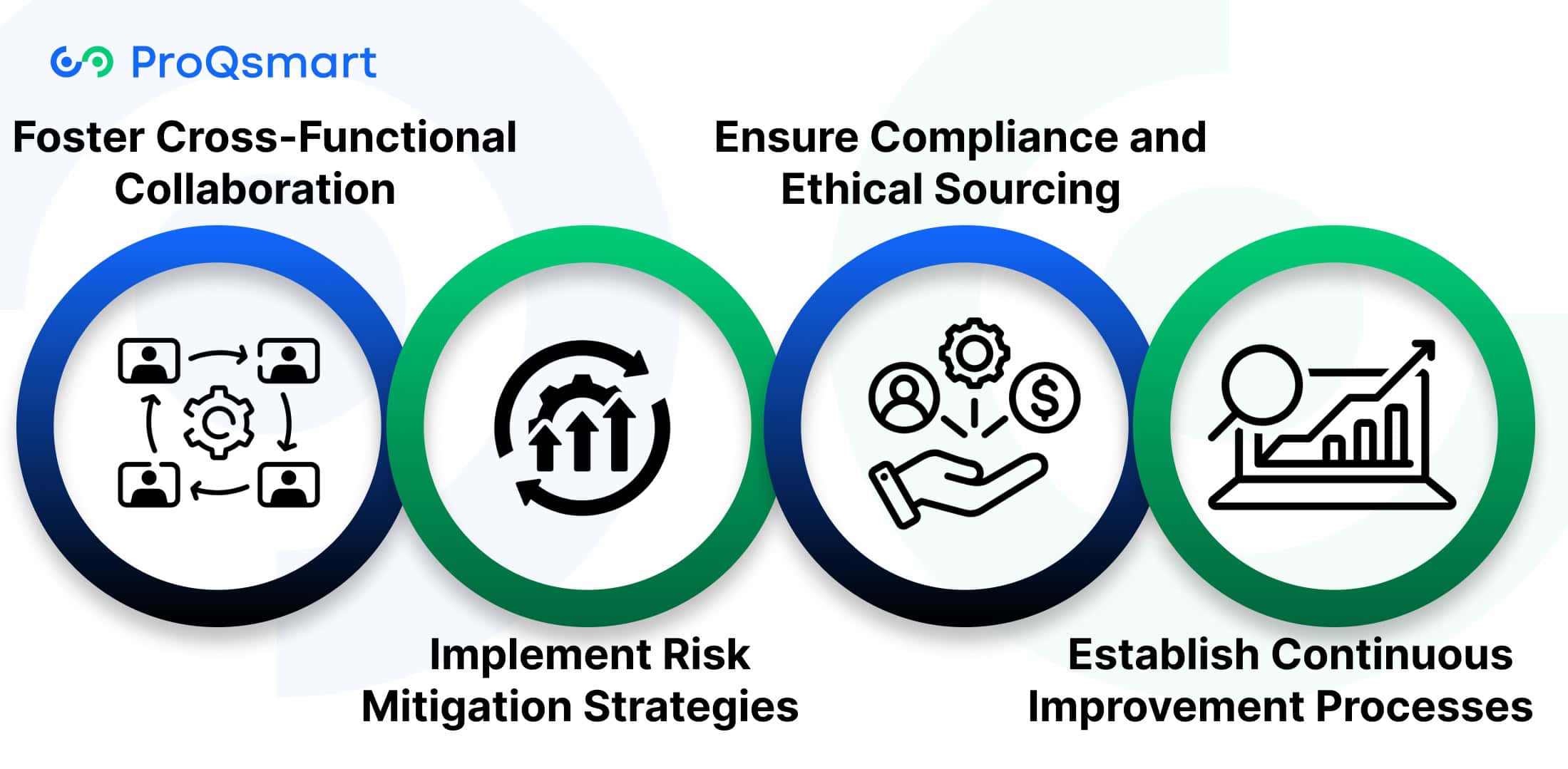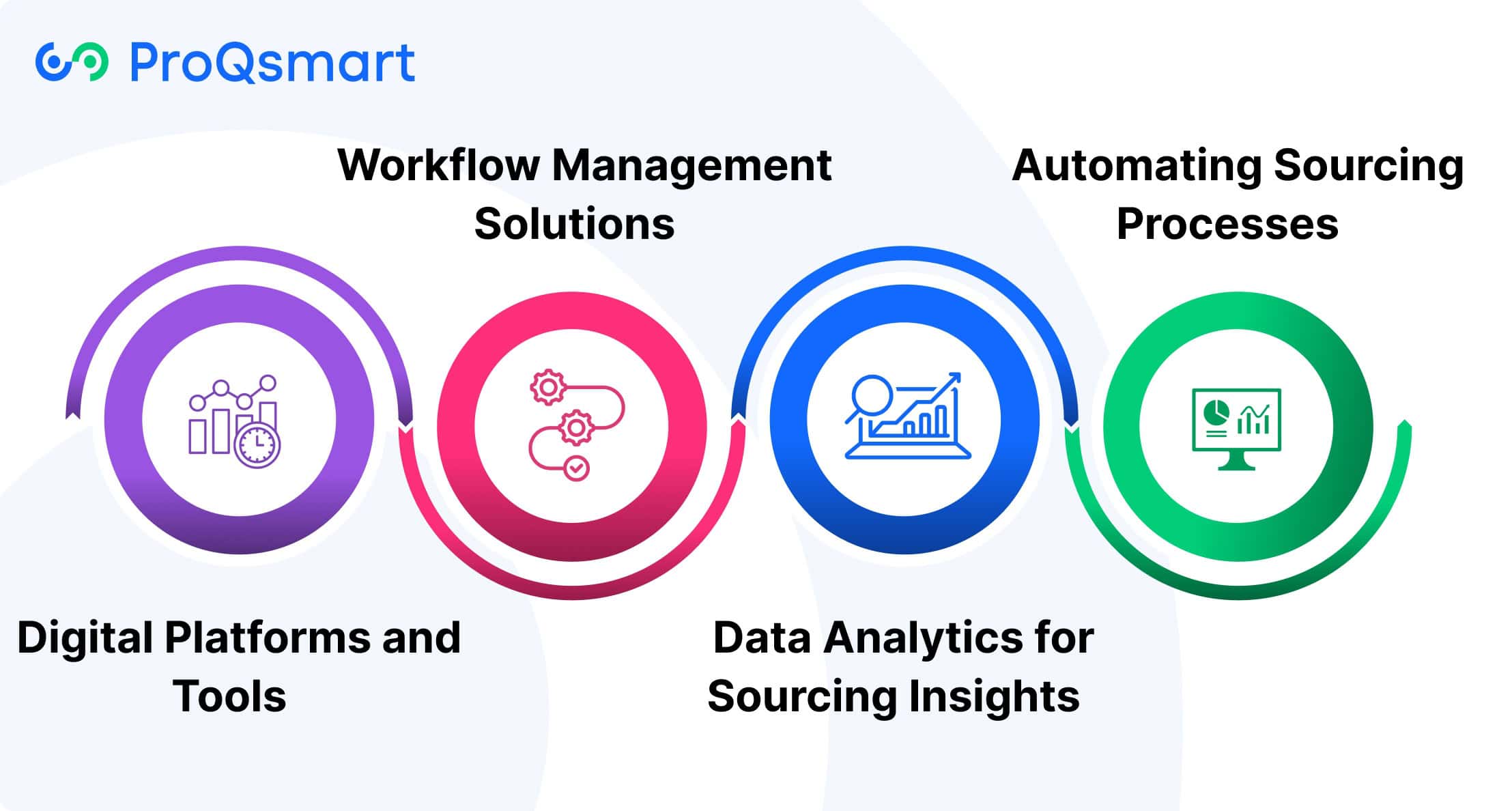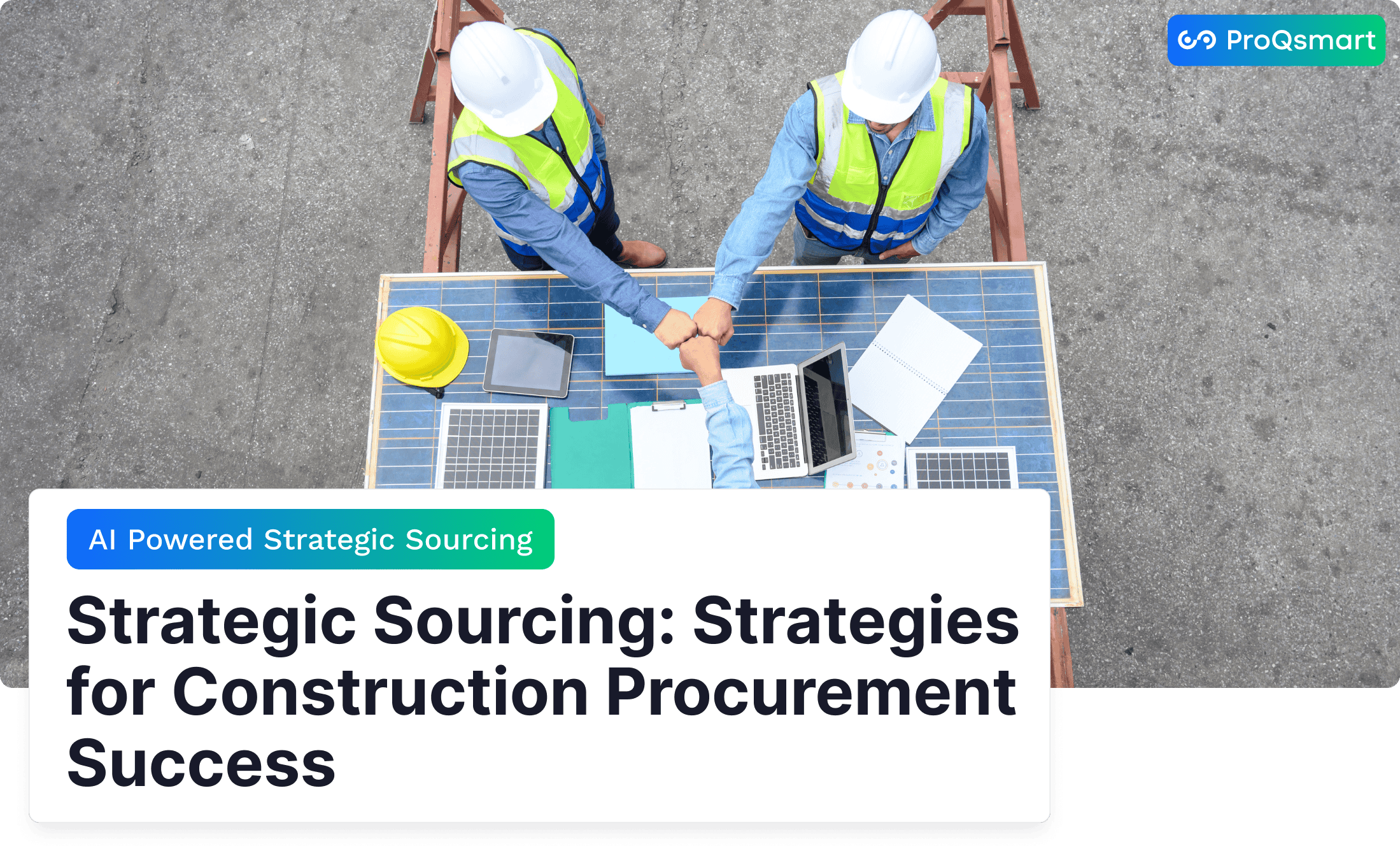Sourcing is the process of identifying, evaluating, and selecting suppliers to procure goods or services that meet specific business needs. It is a keystone to making operations efficient, controlling costs, and maintaining supply chain continuity.
By adopting a strategic approach to sourcing, organizations will be able to build mutually beneficial supplier partnerships, get better terms and performance, and create enduring business value. Best-practice sourcing involves a mix of data-driven decision-making along with insights about current market levels, supplier capabilities, and supply chain resiliency.
Whether you’re controlling direct materials or indirect services, sourcing guides every aspect from production time to bottom line profit. As procurement professionals, staying informed on innovative sourcing strategies and tools is essential for optimizing workflows and achieving organizational goals.
Here are a few important takeaways that can help you improve your sourcing strategy.
What is Strategic Sourcing?
Strategic sourcing is a data-driven methodology to improving procurement practices focusing on driving long-term value instead of just minimizing short-term costs. While operational purchasing is about securing today’s transaction, strategic sourcing looks at a much larger, more comprehensive picture. Most importantly, it aligns procurement activities with broader business objectives, so that each sourcing decision adds value to the organization.
This method emphasizes developing positive, team-oriented connections to suppliers. It focuses on getting the best total value—not just low cost—by looking beyond price to factors such as quality, reliability and sustainability.
Overview of Strategic Sourcing Process
-
- Define procurement requirements and align them with business objectives.
- Conduct market research and develop a list of qualified suppliers who meet the requirements.
- Solicit competitive proposals tailored to unique requirements.
- Evaluate proposals with a focus on minimum requirements and clear criteria including price, service, materials, and sustainability goals.
- Finalize terms that deliver optimal value and risk protection.
- Contract execution: Implement agreements and communicate expectations clearly.
- Monitoring performance: Track supplier performance to ensure accountability.
Strategic Sourcing in Construction
Strategic sourcing is particularly important for the construction industry, where the complexity of projects often requires careful planning and execution. Without effective sourcing, projects can’t just go over budget but will lag behind schedule, fail to comply with regulations, and risk overall project success.
By tackling industry nuances, embracing technology, and promoting best practices with a collaborative mindset, procurement expertise can yield powerful transformations within construction sourcing.
Unique Challenges in Construction
Construction sourcing often faces its own set of challenges. Recent volatile material costs and profit-maximizing labor shortages further contribute, immediately affecting budgets and scheduling on projects.
Environmental impact concerns and regulatory requirements, including environmental and safety standards, have a significant influence on sourcing decisions by establishing clear material specifications and supplier qualifications.
That’s because managing all of those suppliers over big, sprawling, multi-phase projects further compounds projects’ complexities, demanding crystal clear yet coordinated communication among all parties involved.
This is where risk management plays a critical role in preventing delays, cost overruns, and compliance violations. A proactive approach, such as regularly refreshing category strategies and improving risk operating models, positions procurement teams to address these challenges in a court-defendable manner.
Applying Strategic Sourcing Principles
Implementing strategic sourcing principles requires a deep dive into the market to uncover the most dependable suppliers, bringing overall costs in line with required quality standards.
These types of supplier relationships, founded on mutual trust and past performance, lead to greater assurance on timely delivery and quality integrity.
Sourcing success is often determined by key practices. By understanding and utilizing the four pillars of cost management, supplier performance, risk management, and supplier relationship management, you can develop that foundation.
ProQsmart makes procurement easier with intuitive, robust resources. From e-tenders to subcontractor management to supplier performance monitoring, all with the goal of streamlining workflows and increasing compliance.
Key Areas for Strategic Sourcing
-
- Material procurement
- Labor sourcing
- Equipment rental agreements
- Subcontractor management
Technology’s Role in Construction Sourcing
This is the new world where technology is revolutionizing construction sourcing through automated workflow, intelligent collaborative sourcing, and data-driven insights.
Real-time collaboration, transparency, and budget tracking by platforms such as ProQsmart provide a greater level of efficiency.
Such tools even help procurement teams control capital expenditure sourcing to keep projects within budgetary constraints and increase the speed of decarbonization.
Advanced Strategic Sourcing Methodologies

Strategic sourcing has morphed into sophisticated discipline that requires a surgical, agile and creative approach. Procurement professionals can better leverage strategic sourcing processes with more advanced methodologies. They can better synchronize with shifting market conditions and develop more sustainable supplier relationships.
Keeping ahead will take a dedication to those best practices and a willingness to embrace new technology-based solutions.
Market Analysis Techniques
ProQsmart’s AI-driven market insights help you take research to the next level. Additionally, it allows procurement stakeholders to get real-time insights into supplier performance and pricing trends, streamlining the process.
Competitor analysis refines sourcing strategies. Competitor analysis assists in developing effective sourcing strategies by benchmarking against industry leaders. For example, insights into a competitor’s supplier landscape might help inform creative strategies for negotiations or alternative supplier sourcing.
Spend Classification Strategies
Spend classification is the first, most critical step in uncovering significant cost-saving opportunities. Breaking down spending into direct, indirect, and capital expenditures delivers transparency on where taxpayer dollars are being spent.
ProQsmart shines in this area by streamlining workflows and providing real-time visibility into spend, ensuring procurement activities support budgetary objectives. Spend analysis tools highlight trends, enabling professionals to prioritize high-impact categories.
For instance, consolidating similar purchases across various departments can result in cost-saving volume discounts and more efficient supplier management.
Supplier Evaluation and Selection
-
- Quality standards: Ensures products meet performance benchmarks.
- Financial stability: Reduces risk of supplier insolvency.
- Delivery capabilities: Guarantees timely fulfillment of orders.
- Past performance: Assesses reliability through historical data.
Total Cost of Ownership (TCO) Analysis
Total cost of ownership (TCO) analysis extends past upfront costs, including lifecycle expenses like maintenance, disposal, and energy consumption. By surfacing these hidden costs, it allows procurement teams to make better decisions about which suppliers will provide the best long-term value.
By using real-time data to produce TCO evaluations, ProQsmart helps make smarter purchasing decisions that serve sustainability targets.
Best Practices for Strategic Sourcing

Strategic sourcing is more than just finding new suppliers. It’s about creating a formal, objective, value-based approach that is in line with your organization’s priorities. By understanding and adhering to these best practices, companies can improve process efficiency, save costs, and develop healthier long-term relationships with suppliers.
Here’s our take on the key ingredients that make strategic sourcing a success.
Foster Cross-Functional Collaboration
Building teamwork across functions is essential for aligning sourcing strategies with larger business goals. When departments like procurement, finance, and operations collaborate, an organization leverages varied expertise with a shared goal toward an organization-wide vision for progress.
For example, procurement teams can align with marketing departments to strategically source promotional materials, effectively controlling costs and ensuring budget guidelines are met.
Technological tools such as ProQsmart take collaboration a step further by simplifying workflows, cultivating strong supplier relationships, and keeping budgets on track.
Implement Risk Mitigation Strategies
Sourcing risks—from supply chain disruptions to quality failures—can significantly impact operations. Mitigation strategies, such as diversifying suppliers or conducting thorough risk assessments, minimize these challenges.
Contingency planning is vital. For example, pre-approved alternative suppliers ensure continuity during unexpected disruptions.
ProQsmart offers tools for ongoing risk monitoring, automating supplier pre-qualification, and managing compliance to safeguard sourcing decisions.
Ensure Compliance and Ethical Sourcing
Compliance and ethics have always been at the heart of sourcing. Choosing suppliers that comply with regulations and are committed to ethical labor practices creates trust and minimizes reputational risk.
ProQsmart provides tools for transparency that provide accurate, auditable data on sourcing. Together, these tools empower organizations to stay on the right side of the law while advancing ethical practices.
Establish Continuous Improvement Processes
Continuous improvement leads to better sourcing strategies in the long run. Continual performance evaluations, feedback mechanisms, and strategic sourcing blueprints empower businesses to swiftly pivot based on market fluctuations.
ProQsmart can help with this through automating performance monitoring and improvement identification to keep your operations running at top efficiency.
Technology Integration in Sourcing

Technology is dramatically changing the sourcing landscape by providing access to new tools and platforms that drive efficiencies and transparency, thus enhancing effective sourcing strategies. By embracing technology as a core component of their sourcing plan, companies can overcome key challenges and realize tremendous value throughout their global supply chains.
Digital Platforms and Tools
Digital platforms such as ProQsmart have quickly become invaluable tools in this sourcing. With AI-driven capabilities, ProQsmart’s technology makes it fast and easy to create e-tenders, manage supplier relationships, and ensure compliance—all in one platform.
It fosters real-time collaboration, drives cost savings, and ensures transparency, enabling businesses to align procurement strategies with budgets while managing subcontractors and capital expenditure sourcing effectively.
These platforms easily connect with third-party data sources too, providing more flexibility and adaptability to evolving business demands.
Workflow Management Solutions
Workflow automation is one of the growing cornerstones of efficient sourcing. ProQsmart automates workflows like pre-qualification, document management and supplier performance monitoring that require less human intervention.
This creates a cycle of standardization and compliance with regulation and caters to large scale requirements such as bills of quantities. Unified procurement suites further increase efficiency by combining core functions in a cohesive platform, removing the hassle of increasingly complex, convoluted tech stacks.
Data Analytics for Sourcing Insights
These advanced analytics equip sourcing teams to be proactive by revealing actionable insights that drive better sourcing decisions. With 93% of businesses seeing improved decision speed and accuracy, tools using AI and real-time tracking enable precision in evaluating potential suppliers and developing a successful sourcing strategy.
Automating Sourcing Processes
Robotic process automation (RPA) enhances the efficiency of sourcing by automating repetitive tasks such as managing contracts or monitoring suppliers. It makes the implementation less error-prone and workflow faster.
In addition, cloud-based apps take agility to the next level, allowing businesses to respond to shifting market conditions with speed and flexibility, all while facilitating integration.
Ensuring Source Reliability and Originality
In the public procurement space, ensuring reliability and originality in sourcing goods is critical to protecting the reputation and operating capacity of agencies. A successful sourcing strategy, involving a healthy mix of verification, evaluation, and monitoring, can reduce potential harms.
Criteria for Source Credibility
A trustworthy provider has a proven history of quality control, delivery on schedule, and clear and regular communication. You can evaluate the credibility by verifying performance through references and looking back at the results of previous projects.
Financial stability is another critical indicator. Reviewing financial reports or credit scores helps gauge a supplier’s ability to meet obligations. A vendor with a proven track record of consistently providing precision-manufactured components and assemblies on time indicates trustworthiness.
Integrating Primary Sources Effectively
Primary sources, like manufacturers, provide first-hand access to materials with less middlemen. This leads to increased cost efficiency and decreased likelihood of mistakes.
Tools such as ProQsmart only deepen this integration, automating workflows and ensuring your sourcing decisions are always focused on your operating budget. Functionalities such as e-tenders make it easier for vendors to bid, and these supplier relationship management tools help maintain smooth vendor interactions.
Verifying Information and Avoiding Inaccuracies
Verification means asking for certifications such as ISO standards or material safety data sheets to verify that products meet required specifications. When it’s possible to conduct intensive audits, on-site or virtual, with exporting companies, a new level of assurance is established.
Traceability systems like QR codes or blockchain technology allow consumers to see the full transparency of the supply chain. For example, monitoring the origins of raw materials can help ensure that brands are upholding ethical sourcing standards.
Synthesizing Multiple High-Quality Sources
Matching data from different but reliable sources makes a powerful cocktail for improved decision-making. Supplier performance monitoring, as provided by ProQsmart, helps you measure supplier performance regularly and already in line with the terms of the contract.
This flexible strategy allows for quick adjustments based on market evolution, ensuring high-quality standards are consistently met.
Identifying and Balancing Bias in Sources
If bias infiltrates your sourcing, it can sour the best decisions. Shepherding input from a diversity of stakeholders—fostered by tools that allow for collaborative analysis and discussion—encourages objectivity.
Open, honest dialogue fosters mutual understanding of competing priorities, building respect between departments.
Conclusion
Strategic sourcing delivers numerous benefits, including increased supplier accountability, enhanced cost management, and protection of supply continuity. In the construction industry, it ensures the delivery of high-quality materials and services on time. By integrating cutting-edge methodologies with innovative technology, the sourcing process becomes more streamlined and effective. Focusing on source reliability injects trust and consistency into every decision, leading to tangible benefits that power efficiency and competitiveness.
To stay ahead in the industry, it’s crucial to innovate with current trends and implement successful approaches. Take the next step by reevaluating your sourcing strategies, exploring new tools, and cultivating a better supplier ecosystem. For a tailored solution that improves your operations and boosts your bottom line, consider ProQsmart. Book a demo today to discover how ProQsmart can help you achieve sustainable success in strategic sourcing.




